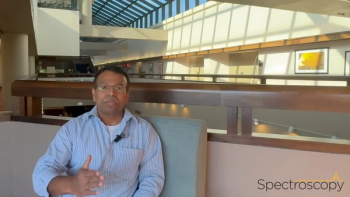
Deep-Learning Approaches for Soil Diagnostics in Precision Agriculture
Key Takeaways
- Deep learning with ICP can predict multiple soil properties, offering a quicker, more accurate alternative to traditional methods.
- The method could support targeted fertilizer application, reduce costs, and mitigate environmental impacts, particularly in developing regions.
A recent study demonstrated that deep learning combined with ICP spectroscopy can accurately and affordably predict multiple soil properties.
Soil diagnostics and sustainable agriculture are key focuses in the farming industry. Because of the push for environmental sustainability, researchers are dedicating their time to developing new methods that are not as destructive to the environment to preserve them for the next generation.
Recently, a team of researchers, led by Satoshi Nakamura of the Japan International Research Center for Agricultural Sciences (JIRCAS), explored a method to make soil testing less damaging to the environment. This method involved using deep learning algorithms with inductively coupled plasma (ICP) to predict a wide spectrum of soil physicochemical properties (1). The study’s findings were published in Scientific Reports (1).
Why is improving soil diagnosis-based agriculture?
Improving soil diagnosis-based agriculture has long been regarded as essential to reducing fertilizer overuse and minimizing environmental damage from runoff and nutrient imbalance (1,2). However, conventional soil diagnostic methodologies are costly, technically demanding, and time-consuming, limiting their accessibility for many farmers and laboratories, especially in developing regions (1,2). Although rapid soil testing approaches have been proposed in recent years, their accuracy and reliability remain inconsistent.
What did the researchers do in their study?
In their study, Nakamura and colleagues analyzed 1,941 soil samples collected from seven nations representing diverse land-use histories, cropping systems, and environmental conditions. Using the ICP wavelength spectral data of soil extracts, specifically 1 M NH₄OAc (ammonium acetate), the team trained a deep-learning model to predict a wide array of soil parameters (1). The target properties included exchangeable bases (Ca, Mg, K, and Na), electrical conductivity, pH in water and KCl, available phosphorus (Bray1-P), exchangeable aluminum, cation exchange capacity, as well as total nitrogen, carbon, clay content, and sand content (1).
What were the results of the study?
The researchers found that the predicted values aligned closely with observed laboratory measurements across nearly all parameters, with determination coefficients (R²) exceeding 0.9 in most cases (1). Even the lowest R² value remained high, underscoring strong prediction reliability. According to the researchers, this is the first study ever to successfully predict multiple soil properties using the full spectral range of ICP soil extract data (1).
What does this mean for agriculture?
This novel method showcased potential to be quicker and more accurate than traditional methods for soil analysis. As a result, it is possible that this method can support more targeted fertilizer application, reduce costs for farmers, and mitigate environmental impacts caused by excessive nutrient input (1). The study notes that this technique may be especially valuable in developing nations, where high testing costs hinder widespread soil assessment and fertilizer optimization.
That being said, the deep-learning model used is not ready for full-scale adoption yet. In the study, it only used a relatively small data set. The researchers believe that larger data sets and improved training architectures are needed to further improve accuracy (1). Future studies may include ICP data collected from charge-coupled device (CCD) detection units and convolutional neural networks (CNNs) to better capture nuanced spectral patterns (1). The team also intends to explore alternative soil extractants beyond NH₄OAc to determine whether different solutions could enhance prediction performance.
“These results should be considered the first step, which uses a simple learning procedure with a limited sample size,” the authors wrote (1). “Increasing the sample size could further improve the prediction accuracy.”
Beyond agricultural management, the researchers see broad analytical potential. ICP spectrum-based predictions could help guide laboratory-based chemical analysis by offering approximate concentration estimates in advance, improving workflow efficiency (1). The paper further suggests that the model could eventually predict soil biodiversity, soil health, and even pollution levels, including contaminants such as heavy metals, microplastics, and per- and polyfluoralkyl substances (PFAS) (1).
What are the main takeaways from this study?
One of the main takeaways from the study is that although ICP instruments show promise, there remains barriers preventing it from being further adopted. For one, operating ICP requires high-purity argon gas and a high-frequency power supply, limiting feasibility in resource-constrained countries (1). For two, plasma spectrometry instrumentation continues to be expensive. Continued innovation, therefore, must work to drive down the costs of these instruments (1).
As a result, this study presents a new method that could potentially offer a faster, cheaper, and more environmentally responsible alternative to traditional soil testing.
References
- Nakamura, S.; Imaya, A.; Ikazaki, K. Deep Learning Using Inductively Coupled Plasma Spectroscopy Spectra Accurately Predicts Various Soil Physicochemical Properties for Soil Diagnosis. Sci. Rep. 2025, 15, 37753. DOI:
10.1038/s41598-025-24274-3 - Wetzel, W. The Latest in Agriculture: How Spectroscopy is Advancing the Field. Spectroscopy. Available at:
https://www.spectroscopyonline.com/view/the-latest-in-agriculture-how-spectroscopy-is-advancing-the-field (accessed 2025-11-25).
Newsletter
Get essential updates on the latest spectroscopy technologies, regulatory standards, and best practices—subscribe today to Spectroscopy.





